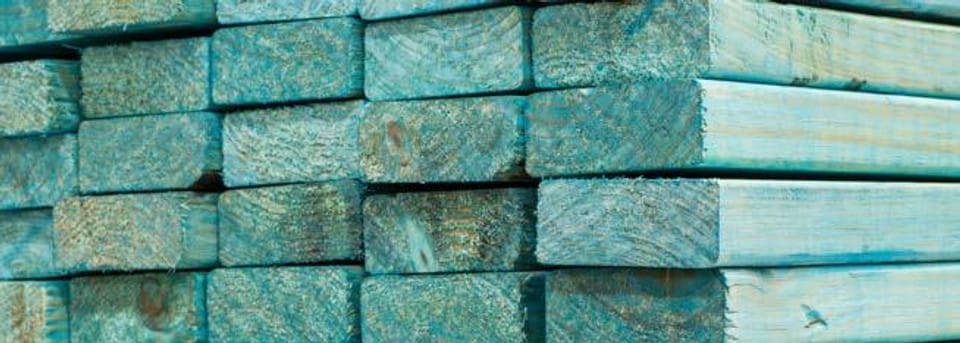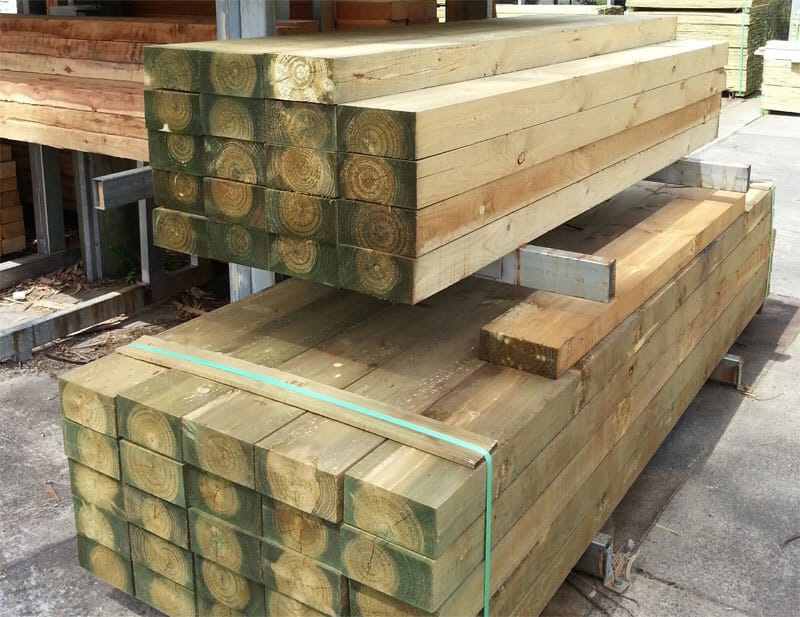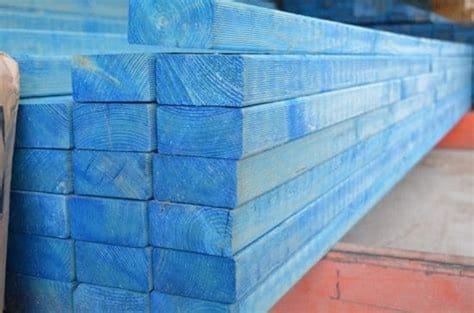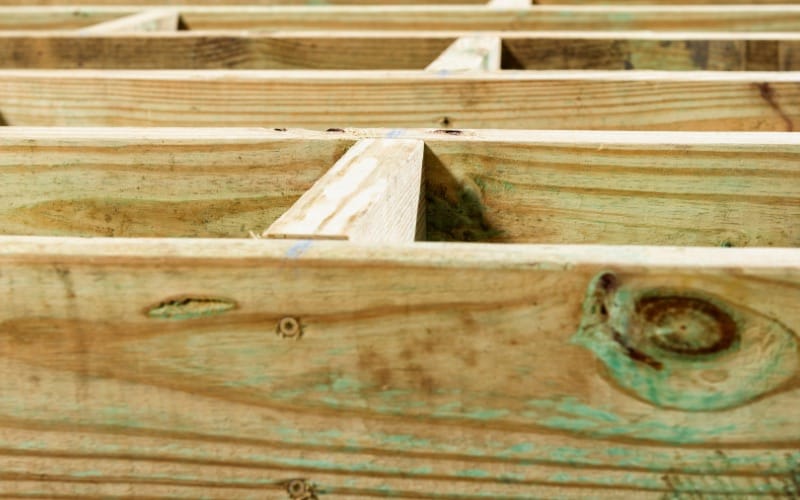The Ultimate Guide to Treated Pine: Everything You Need to Know for Your Next Project
This comprehensive guide covers everything about treated pine, from its advantages and applications to selecting the right type and maintenance tips, ensuring your next project is a success.

When planning an outdoor or building project, picking the right materials is key. Whether you're imagining a peaceful garden deck, a strong pergola, or a durable retaining wall, the success of your project relies heavily on this important choice. With things like decay, bugs, and tough weather to contend with, finding a material that lasts is a common challenge for homeowners and DIY fans.
Introducing treated pine - a top choice for lasting strength and flexibility, tackling the ongoing challenge of weather and bugs head-on. But what is treated pine, and why is it such a go-to for construction and outdoor projects everywhere? This detailed guide dives into the world of treated pine, uncovering its advantages, uses, and what to think about for your upcoming project.
What is Treated Pine?
Preservative treated pine isn't your ordinary wood. It's pine that's been through a special process, soaking up chemicals to fight off fungi, bugs, and other wood-harming critters. This isn't just a surface treatment. The preservatives penetrate deep, giving the wood long-lasting defense against decay and pests. That's why treated pine holds up better than many other types of wood when faced with the elements.
Treated pine is incredibly versatile. It's not just tough against decay and bugs; it's also incredibly adaptable for construction and landscaping. Whether you want a stylish pergola or a sturdy deck, or need it for cladding, retaining walls, posts, or poles, treated pine fits the bill where untreated pine falls short. Its ability to adjust to different needs makes it a go-to material for all sorts of projects.

Why Treated Pine?
Understanding the importance of treated pine involves recognizing the weaknesses of its untreated form. Pine, especially its sapwood, is naturally susceptible to insects and fungi when it's left outdoors or in damp areas. Because of its structure, full of moisture and starch, it's prone to decay, which weakens its strength and lifespan.
Treated pine offers a shield against these natural threats. By impregnating the wood with preservatives that include fungicides and insecticides, treated pine stands resilient against the forces that typically hasten the deterioration of wood. This protective barrier enables it to withstand conditions that would otherwise lead to its premature failure.
Furthermore, we must consider the environmental impact of opting for treated pine. By making pine wood last longer, we decrease the necessity for frequent replacements, promoting sustainable building practices. With its ability to resist decay and pests over time, treated pine emerges as a eco-friendly option for projects prioritizing durability and sustainability.
In the next sections, we will explore the types of preservatives used in treated pine, how to choose the right treated pine for your project, and the processes involved in treating pine.
Stay tuned as we dive deeper into making informed decisions for your construction and landscaping endeavors with treated pine.

Types of Preservatives Used in Treated Pine
Not all treatments for pine are the same in defending against nature and pests. The type of preservative used is crucial for ensuring the wood lasts in different situations. Generally, preservatives come in three types: water-based, solvent-based, and oil-based, each with unique traits and recommended uses.
- Water-borne Preservatives: These include popular options like Copper Chrome Arsenic (CCA), Alkaline Copper Quaternary (ACQ), and Copper Azole (CuAz). These chemicals are mixed with water and deeply impregnated into the wood. They are particularly effective against decay-causing fungi and insects, making them suitable for a wide range of outdoor applications. However, they do not protect against weathering, so treated wood requires additional finishing for weather resistance.
- Solvent-borne Preservatives: Light Organic Solvent Preservatives (LOSP) are among this category, utilizing a solvent as the carrier for fungicides and insecticides. LOSP treatments are ideal for applications where the natural appearance of pine is desired, as they leave the wood's color relatively unchanged. They offer long-lasting protection for above-ground applications but are not suitable for ground contact.
- Oil-borne Preservatives: Creosote and Pigment Emulsified Creosote (PEC) fall under this category. Known for their deep penetration and effectiveness against severe decay and marine borers, oil-borne preservatives are used in heavy-duty applications like railway sleepers and utility poles. However, their oily nature and strong odor make them less suitable for residential applications.

Choosing the Right Treated Pine for Your Project
The key to your project's success isn't just picking treated pine but selecting the right type of treated pine. It all depends on the particular challenges your project will encounter, like moisture, bugs, and contact with the ground. To help with this decision, there's a system called the "hazard class," which guides you in choosing the suitable treatment level:
- H1 and H2: Suitable for indoor use where there's a risk of insect attack but no moisture.
- H3: Ideal for outdoor above-ground applications, protecting against decay, borers, and termites.
- H4: Designed for ground contact, offering robust protection against severe decay and pests.
- H5 and H6: Reserved for the most demanding conditions, including fresh water and marine applications, providing the highest level of protection.
Understanding the exposure risks of your project and consulting these guidelines will help ensure you select a treated pine product that offers adequate protection.
Treatment Processes Explained
The success of treated pine depends not just on the chemicals but also on how it's treated. The aim is to make sure the preservatives penetrate deeply and evenly. The most popular method, called vacuum-pressure impregnation, includes these steps:
- Preparation: The wood is dried to a specific moisture content to optimize preservative uptake.
- Initial Vacuum: Air is removed from the wood's cells to facilitate deeper preservative penetration.
- Preservative Application: The preservative is introduced under pressure, ensuring it permeates the wood thoroughly.
- Final Vacuum: Excess preservative is removed, enhancing the wood's handling and performance.
This thorough process ensures that treated pine can fend off biological threats for many years, even decades, making it a dependable option for construction and landscaping endeavors.
Exploring the ins and outs of treated pine, from the protective preservatives to picking the right type for your project and the treatment methods ensuring its strength, it's evident that treated pine goes beyond just being a material choice. It's an investment in the long-term success of your outdoor and structural ventures. Whether you're envisioning a deck, a pergola, or any structure facing the elements, opting for treated pine means choosing peace of mind, sustainability, and resilience.

Maintenance and Care for Treated Pine
Even though treated pine naturally fights decay, insects, and weather damage, it still greatly benefits from regular upkeep, just like any wood. Taking care of it prolongs its lifespan and keeps its good looks intact. Here are some ways you can maintain treated pine:
- Finishing: Although treated pine is engineered for durability, applying a suitable finish can enhance its resistance to weathering. For water-borne treated pine, acrylic paints or stains are recommended due to their flexibility and durability under varying weather conditions. Solvent-borne treated products, which retain the natural look of pine, may be finished with clear water repellent solutions to maintain their appearance while providing protection against moisture.
- Regular Inspection and Maintenance: Periodically check for signs of wear, such as cracking or splitting, which are common as the wood ages and is exposed to the elements. Early detection allows for timely refinishing or repair, prolonging the wood's life.
- Cleaning: Keep treated pine surfaces clean from dirt, debris, and algae, which can hold moisture against the wood, promoting decay. A mild soap solution and a soft brush can effectively clean most treated pine surfaces without damaging the wood or its finish.
Safety and Environmental Considerations
Working with and disposing of treated pine requires consideration of its chemical treatments for both personal safety and environmental protection.
- Handling Precautions: When cutting, sanding, or drilling treated pine, always wear protective gear such as gloves, masks, and goggles to prevent exposure to dust and chemicals. Work in well-ventilated areas to minimize inhalation of any particulate matter.
- Disposal: Treated pine should never be burned, as this can release toxic chemicals into the air. Instead, dispose of off-cuts or waste material through local waste management facilities that can handle treated wood. Some regions offer recycling or special disposal services for treated wood, reducing its environmental footprint.
- Environmental Impact: The preservatives in treated pine can have environmental implications, particularly if the wood comes into direct contact with soil or water bodies. Selecting products treated with newer, less toxic preservatives such as ACQ or Copper Azole can mitigate these concerns. Moreover, the durability of treated pine means less frequent replacement and, consequently, a reduced demand for raw timber resources, aligning with sustainable use principles.
- Download a typical H2 Treated Pine MSDS Below
Conclusion
Treated pine is a top pick for many projects because it's durable, versatile, and budget-friendly. Whether you're building decks, pergolas, or garden beds, it's a sturdy solution against nature's challenges. But to get the most out of it, you need to select the right type for your project, install it correctly, keep up with maintenance, and follow safety and environmental guidelines.
As we wrap up this ultimate guide to treated pine, remember that your choices affect both your project's success and the environment. By making smart decisions and caring for your treated pine properly, you can ensure your projects are not only strong and attractive but also sustainable and safe for the long haul.
FAQs
Can treated pine be used for vegetable gardens?
- Yes, but with caution. Choose treated pine products with non-toxic preservatives like ACQ or Copper Azole to minimize any risk of chemical leaching into the soil.
How often should treated pine be repainted or restained?
- Typically, treated pine should be refinished every 2-5 years, depending on exposure to elements and the type of finish used.
Is treated pine safe for indoor use?
- Yes, especially when using newer treatments with lower toxicity levels. However, ensure the space is well-ventilated, particularly soon after installation.
Can treated pine be recycled?
- Recycling options vary by region, so check with local waste management authorities for guidelines on recycling or disposing of treated pine.
How much treated pine would i have to ingest to die?
- Around a standard telegraph/street power line poles worth should do the trick. When was the last time you took a bite from a piece of timber?
What type of safety precautions should i take when using/handling treated pine?
- Always read the MSDS for the product then conduct a risk assessment/hazard matrix assessment. Some people react differently to the chemicals used. In my experience, gloves are best becuase it is a skin irritant and definately a mask and eye protection when cutting, window blows dust around. It can be in eye and throat irritant.
- There is a reason the termites dont like (they are not stupid) it so its best to not shower in the stuff either.
Further Reading
- A guide to using treated pine in residential construction - READ HERE
- 90x35MGP framing timbers of LVL (Laminated Veneer Lumbar) - Which should you choose? - READ HERE
- Timber or Steel? Choosing a Lightweight Frame for Your Home - READ HERE
- Timber or Steel?The Ultimate Choice for Energy Efficient Home Framing - READ HERE


Discussion